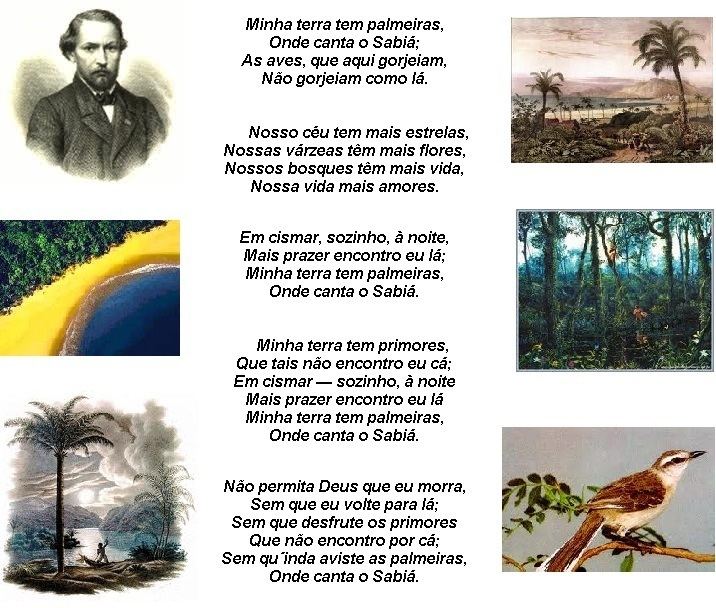Originally published 1846 | ||
 | ||
Similar I‑Juca‑Pirama, O Navio Negreiro, Lira dos Vinte Anos, Espumas Flutuantes, Noite na Taverna | ||
Can o do ex lio gon alves dias
"Canção do exílio" ([kɐ̃ˈsɐ̃w dw eˈzilju], Exile song) is a poem written by the Brazilian Romantic author Gonçalves Dias in 1843, when he was in Portugal studying Law at the University of Coimbra. The poem is a famous example of the first phase of Brazilian Romanticism, that was characterized by heavy nationalism and patriotism.
Contents
The poem first appeared in Dias' book Primeiros Cantos (First Chants), that was published in 1846. It was influenced by and loosely based on Johann Wolfgang von Goethe's ballad Mignon, and some verses of the ballad are used as the poem's epigraph.
"Canção do exílio" is one of the most famous poems of Brazilian literature, being referenced and/or parodied by many other Brazilian authors. The lines "Nossos bosques têm mais vida,/Nossa vida mais amores" are even used in the national anthem of Brazil.
The poem
The poem begins with an excerpt of Johann Wolfgang von Goethe's ballad Mignon as epigraph:
"Kennst du das Land, wo die Zitronen blühen,Im dunkeln die Gold-Orangen glühen,Kennst du es wohl? – Dahin, dahin!Möcht ich... ziehn."Freely translated into English as:
"Do you know the land where the lemon trees bloom,And the golden oranges glitter in the dark,Do you know it? – There, there!I would like to... go there."